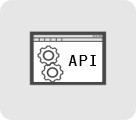TestStand Advanced Architecture Series
Overview
 | Code Module Development High quality, well-designed code modules increase the reusability and maintainability of test software components. This document provides a series of recommendations on how to create well-architected code modules that yield modular applications, balancing application development environment tasks with what TestStand natively provides. Read the TestStand Code Module Development Best Practices document. |
 | Custom Step Type Development TestStand's step type architecture allows developers to create innovative and unique custom step to extend the functionality of the step types provided by TestStand. This document explains custom step type development and provides a set of best practices to help you get started making better custom step types faster. Read the TestStand Custom Step Type Development Best Practices document. |
 | Programming with the TestStand API The TestStand API provides a mechanism you can use to automate TestStand capabilities. This document introduces the use of the TestStand API, which contributes to the power and flexibility of TestStand. Read the Programming with the TestStand API document. |
 | Report Generation and Customization Every automated test system must collect and report test results. Almost as common as the need to report results is the need to customize how these results are generated. This document includes different methods for customizing reporting in TestStand by explaining the default reporting in TestStand, results collection, and report generation. Read the TestStand Report Generation and Customization document. |
 | Process Model Development and Customization The TestStand process Model architecture allows you to share non-UUT specific features across multiple test sequences, promoting code reuse and reducing development and maintenance time. This document outlines best practices for developing and customizing the process model. Read the TestStand Process Model Development and Customization document. |
 | Verification and Validation of TestStand Systems Verification and Validation (V&V) processes formally ensure that the test system is developed correctly and accomplishes its intended purpose. This document discusses V&V as it applies to test systems developed with TestStand. Read the Verification and Validation of TestStand Systems document. |
 | Improving TestStand System Performance The performance of your test system can significantly impact the productivity and cost of your manufacturing line. Slow test systems may require costly duplication or decrease test coverage, both of which can affect quality. Optimizing the performance of your test software performance can provide large gains in test time and more thorough testing using fewer test stations. This article discusses best practices for optimizing the performance of test stations developed with NI TestStand software. Read the Improving TestStand System Performance document. |
 | User Interface Development The user interface is the test system's point of interaction with test operators and engineers. User interfaces are commonly used across different product lines and test systems. To ensure a smooth testing process, developers must create easy to use, scalable and maintainable user interfaces. This article explains the best practices to design and develop your TestStand User Interface. Read the TestStand User Interface Development Best Practices document. |
 | Deploying TestStand Systems The deployment of test systems is one of the most important pieces of test framework development which is often overlooked. Deployment of TestStand systems involves identifying all the different components that need to be deployed, determining their dependencies, and then packaging them into a deployable solution. Once a deployable solution is created, there are multiple approaches that could be used to deploy it to test stations. This document discusses the concepts and best practices for a deployment architecture based on a shared network drive. Read the TestStand System Deployment Best Practices document. |
 | Type Management TestStand data types and step types, collectively referred to as ‘TestStand types’, allow you to define reusable data structures and steps. Although TestStand types facilitate the development of test systems, the shared and modular nature of types requires you to follow type management practices to avoid unintended type version propagation. This document describes how types function and suggests best practices for type management. Read the TestStand Type Management Best Practices document. |
Content Contributors
- Ray Farmer, Specialist Consultant, Nomad Technical Services Ltd.
- Joe Spinozzi, Director of Operations, Cyth Systems
- Daniel Elizalde, Product Development Manager, VI Technology
- Albert DeWeese, Staff Systems Engineer, VI Technology
- Aaron Gelfand, Senior Systems Engineer, VI Technology
- Paul Mueller, Staff Systems Engineer, VI Technology
- Mathieu Daigle, Software Engineer, Averna
- Roberto Piacentini, Test Frameworks & Calibration Group Manager, NI
- Hjalmar Perez, Senior Test Frameworks Software Engineer, NI
Additional Resources